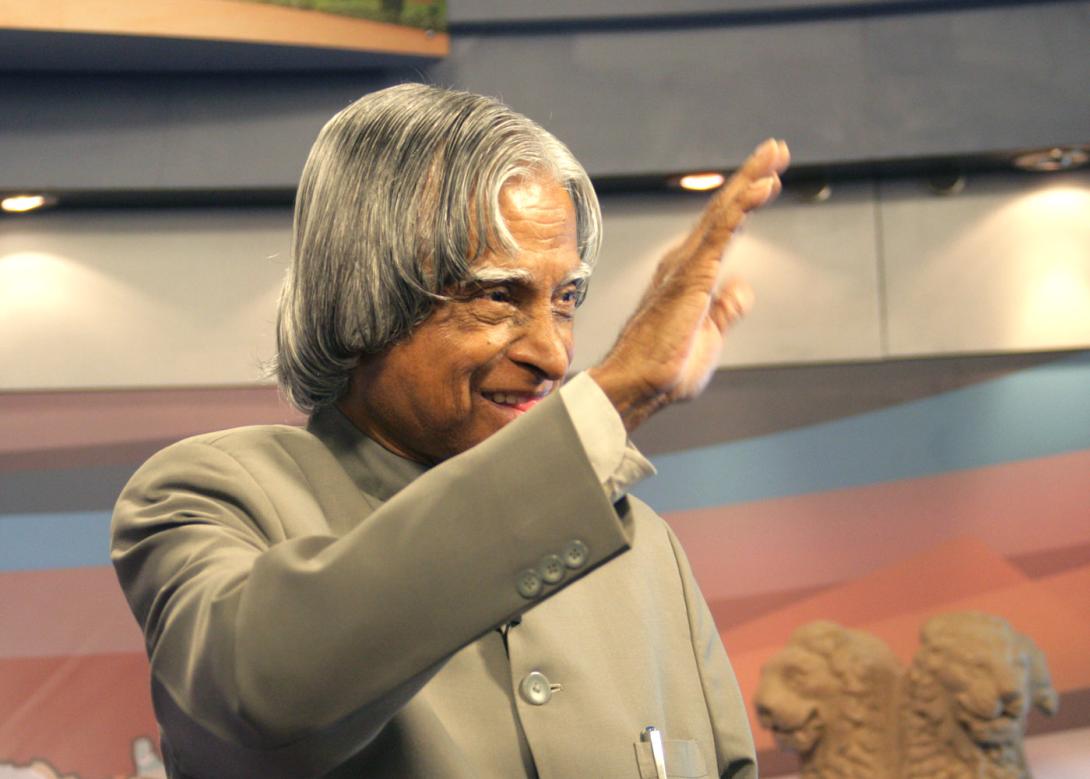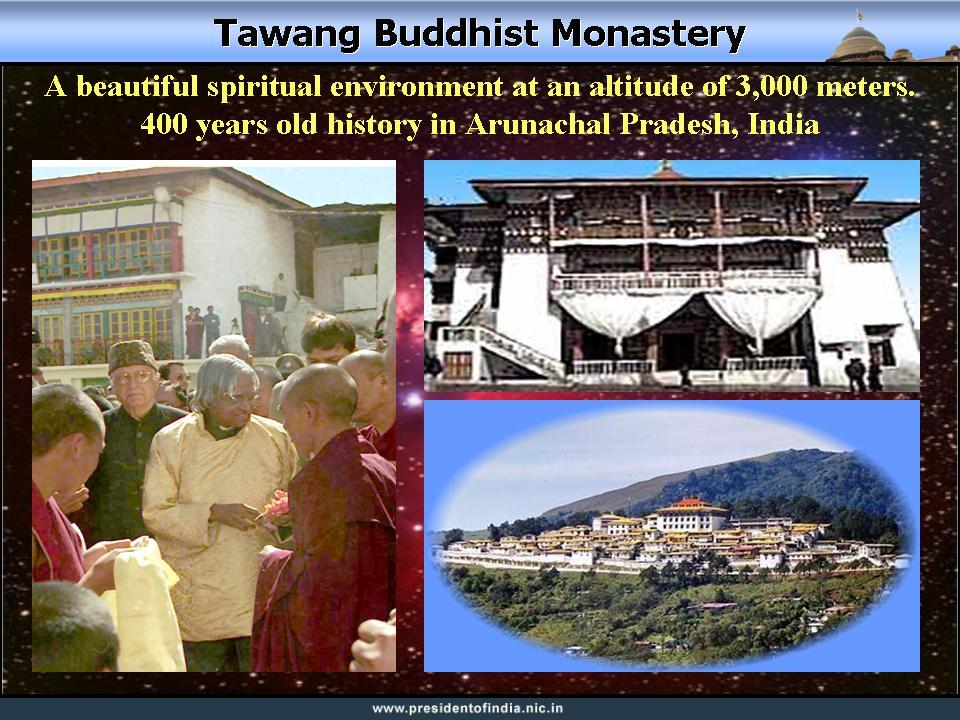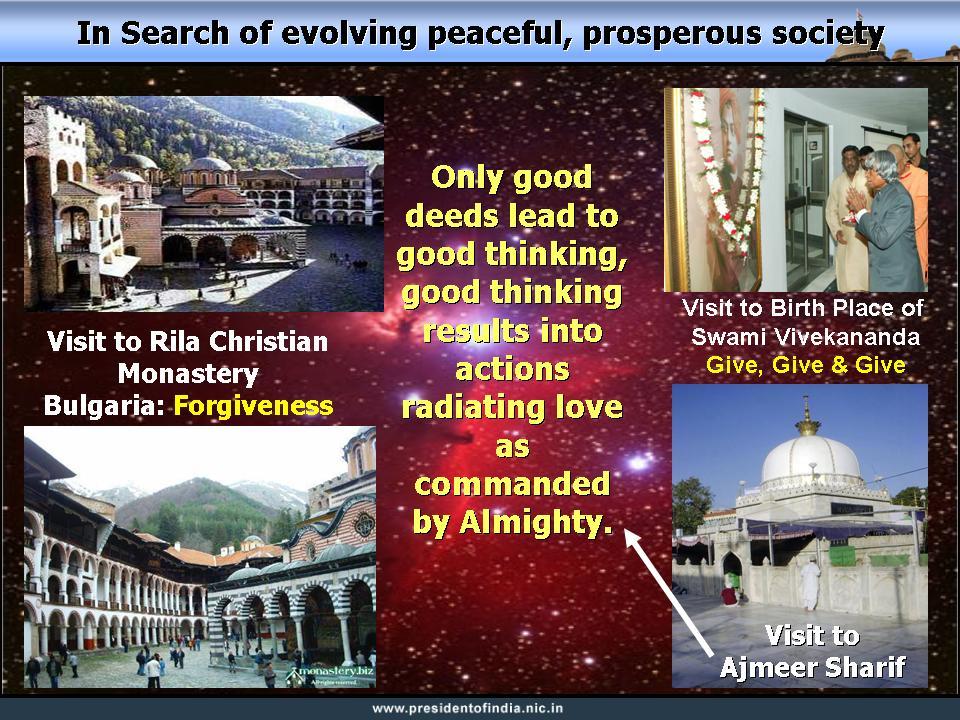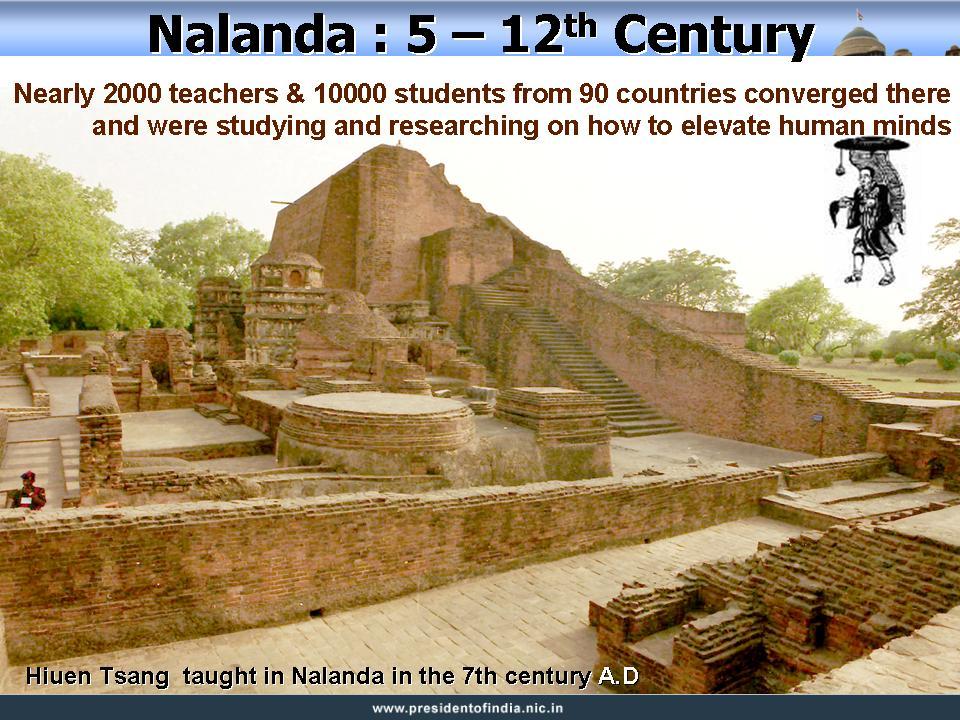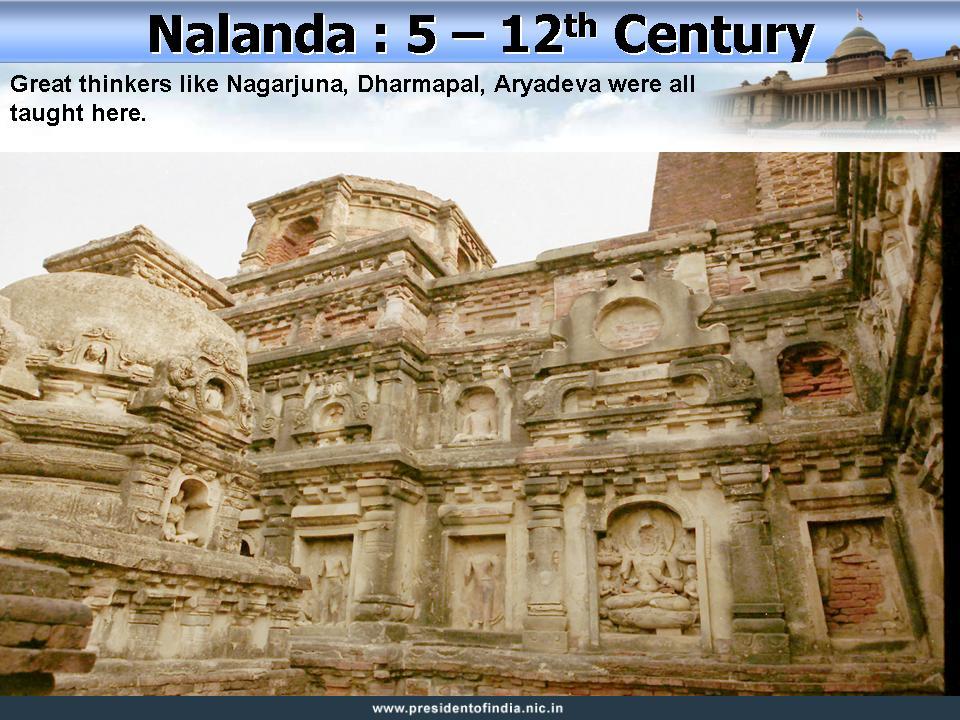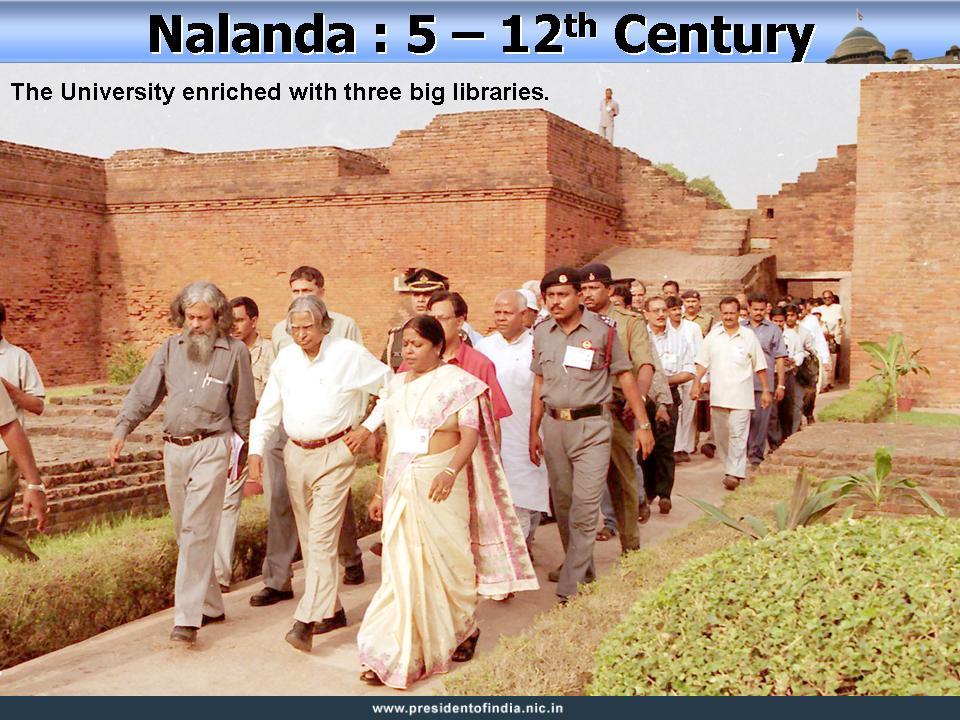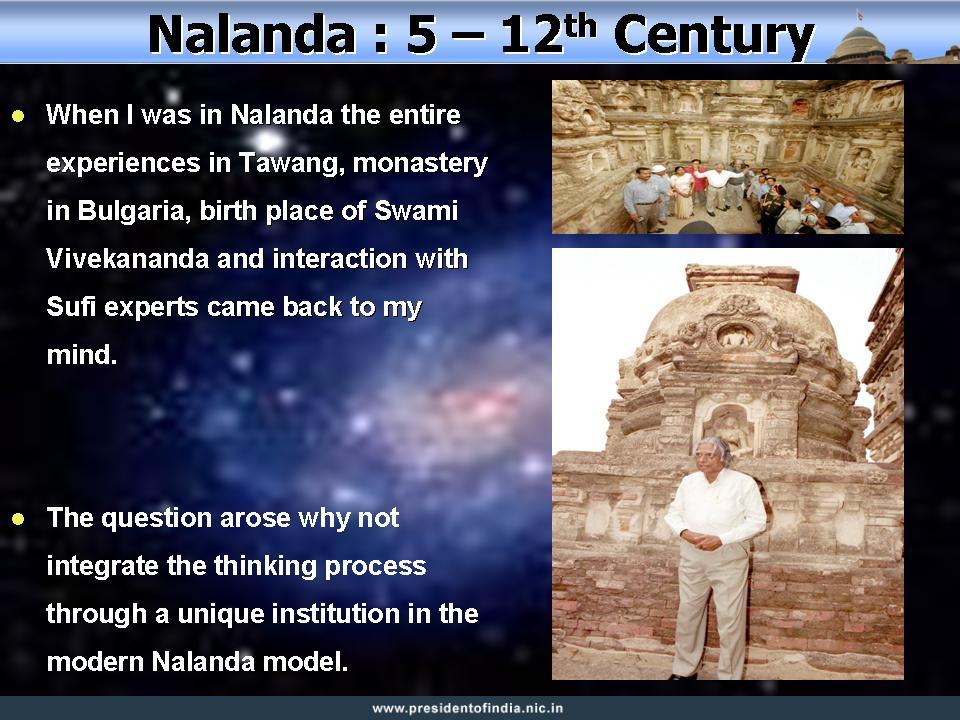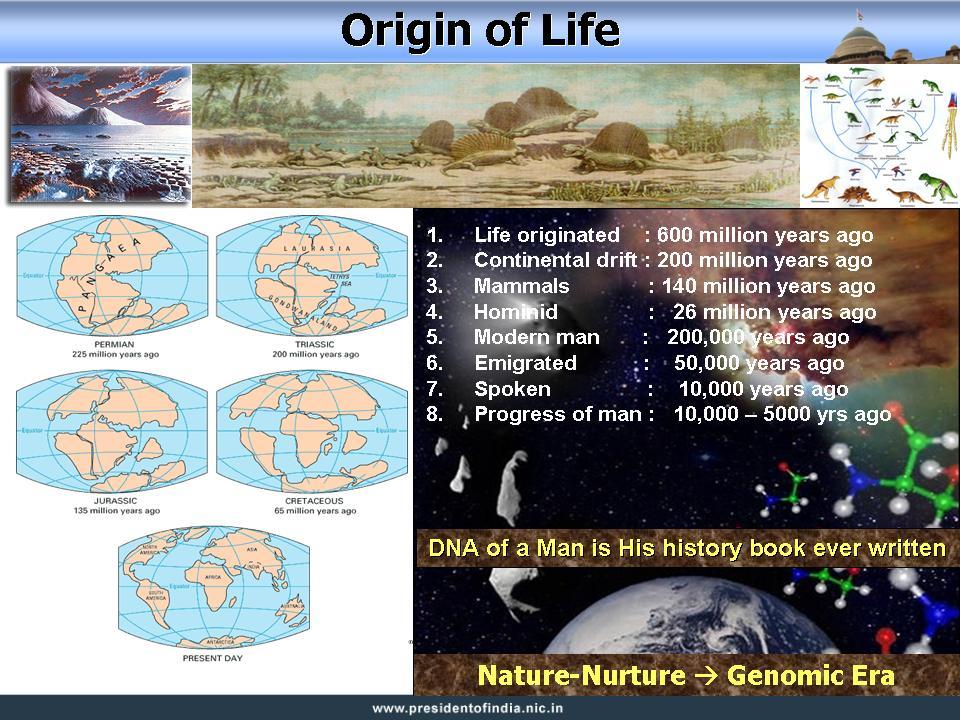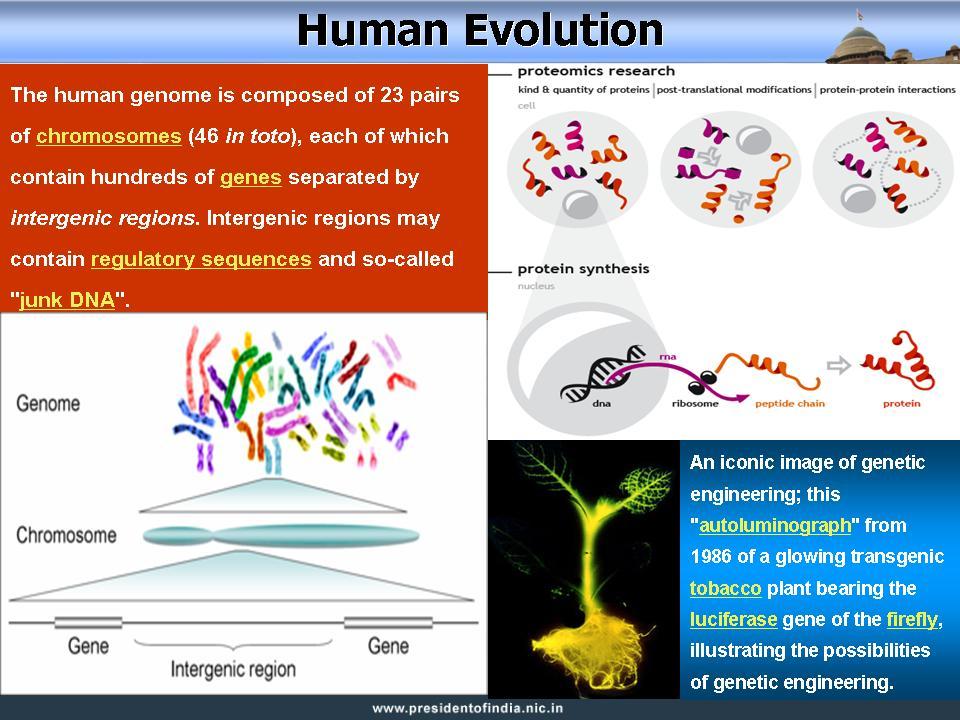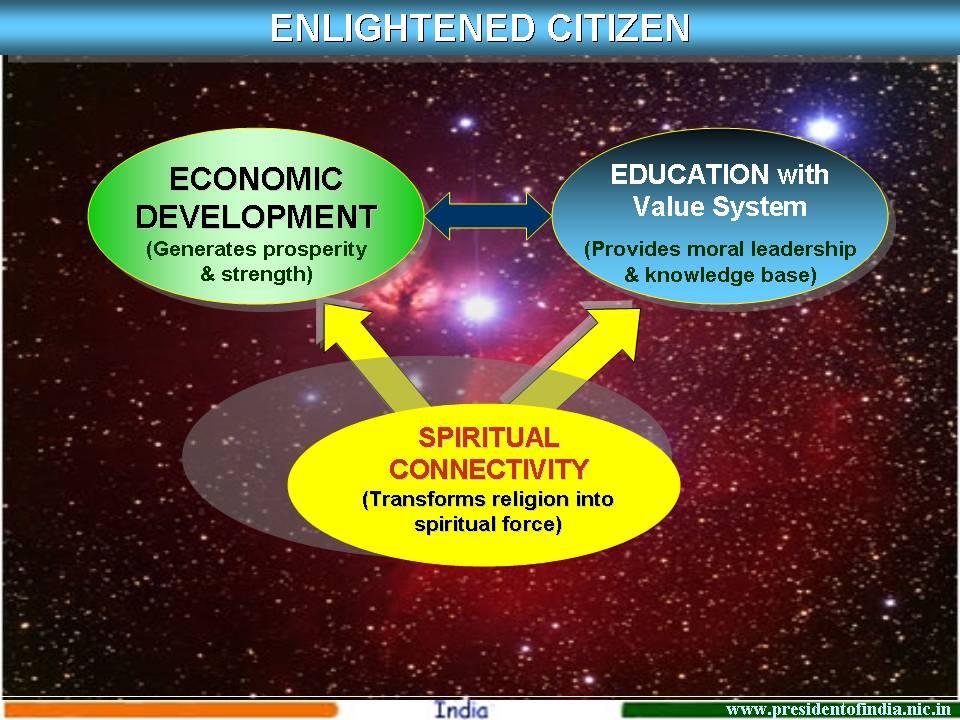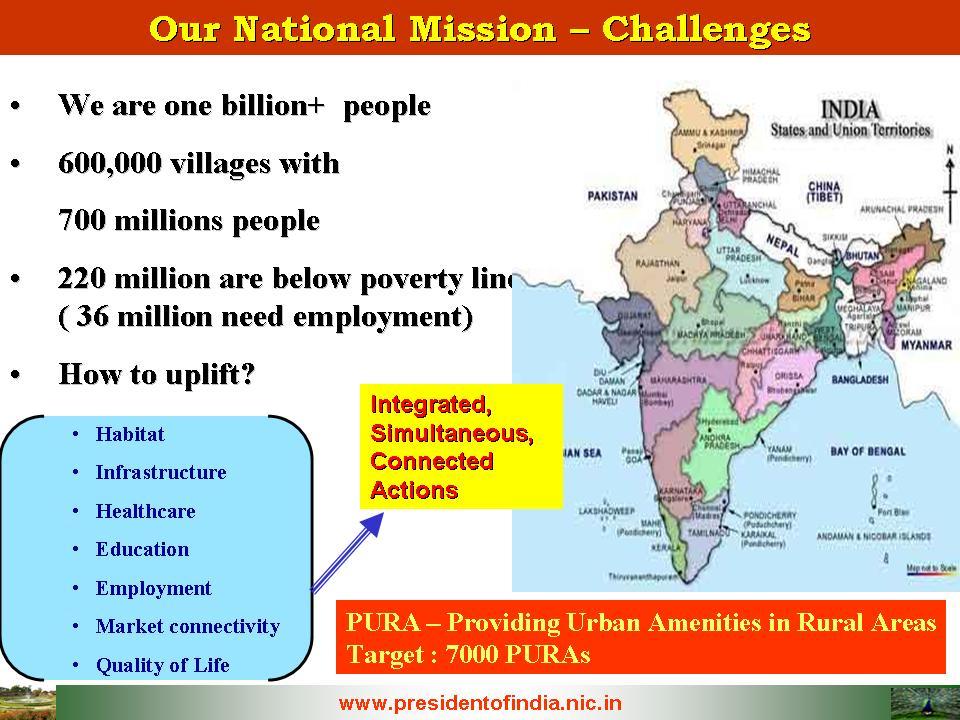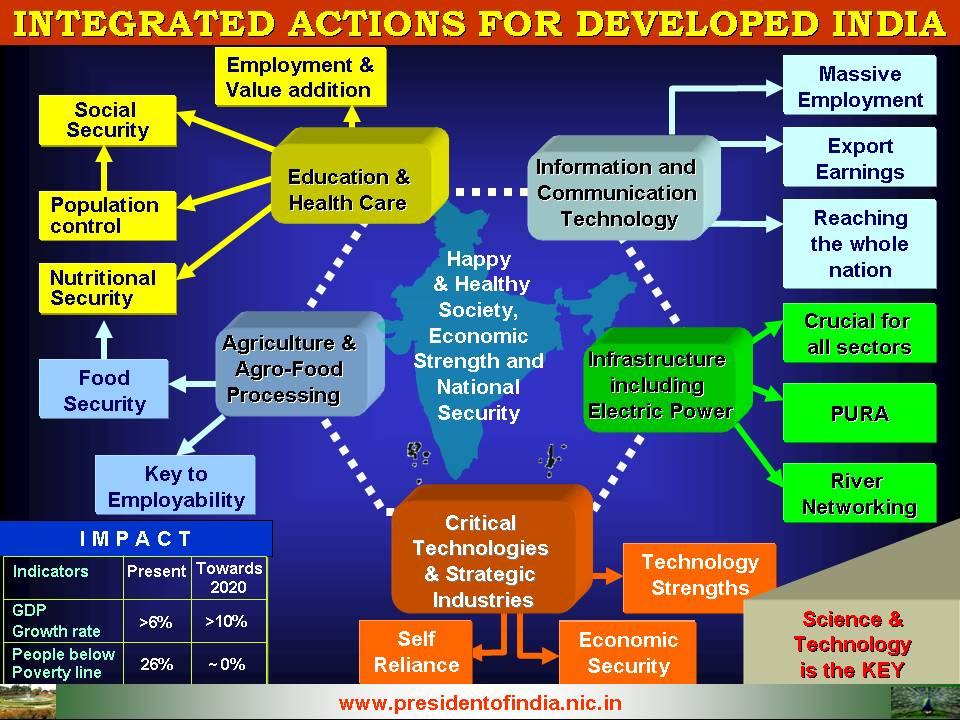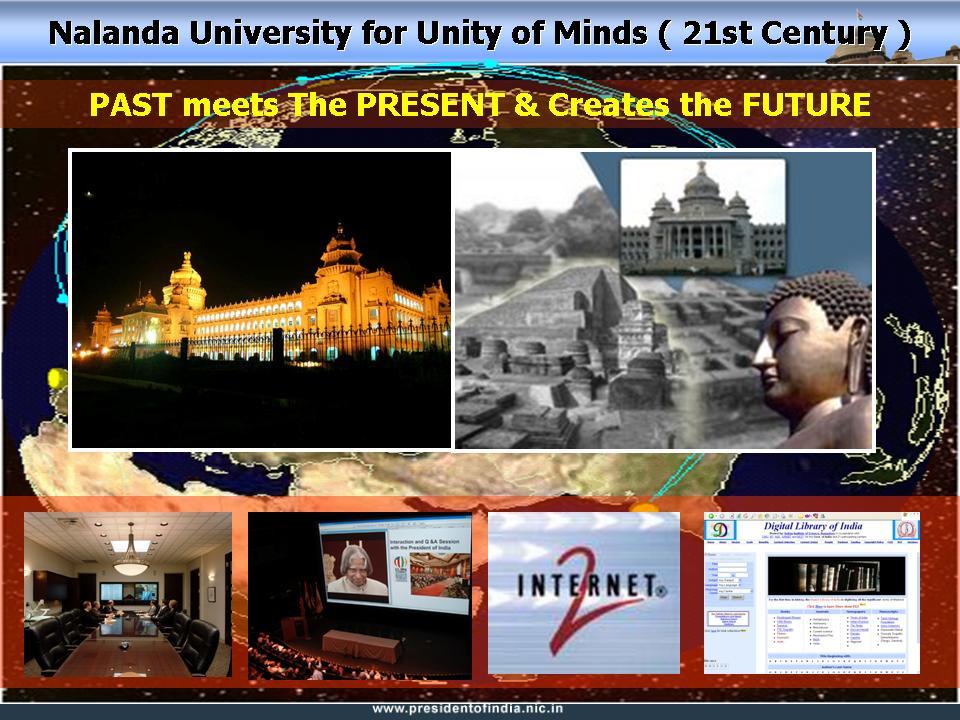Address at the Symposium of Nalanda: Buddhist Cultural Links Between Eastern and Southern Asia, New Delhi (Through Multimedia Tele-conference)
New Delhi : 13-11-2006
Evolution of Enlightened Citizens in planet Earth
"?Past meets the present
and creates the future?
I am delighted to participate in the International Symposium, Nalanda: Buddhist cultural links between East and South Asia. I am very happy that this symposium in Singapore is bringing together thinkers from different nations to discuss the cultural and spiritual thoughts relevant to the present ambience in our planet. My greetings to all the participants of this symposium. I would like to discuss with you on the topic ?Evolution of Enlightened Citizens in planet Earth?.
Unity of Minds
I would like to share with you friends, an experience when I visited in the year 2003 one of the Indian states, Arunachal Pradesh, I visited a Buddhist monastry at Tawang
3500 m. altitude. I stayed and spent some time nearly for a day. I observed a unique situation in all the villages nearby where young and experienced were all radiating happiness in spite of severe winter environment. Then I visited the 400 years old Twang monastery itself and there also I saw monks of all age groups in a state of serenity. I was asking myself what is the unique feature of Twang and surrounding villages which makes people and monks to be at peace with themselves. When the time came, I asked the Chief Monk, how in Tawang villages and monastry I am experiencing peace and happiness being radiated by everyone. There was a pause, the chief monk smiled. He said, ?You are the President of
India. You will be knowing all about us and the whole nation. Again I said, ?it is very important for me, you please give me your thoughtful analysis?.
There was a beautiful golden image of Lord Buddha radiating smile and peace. The Chief Monk assembled nearby all his 100 young and experienced monks. The Chief Monk and myself were sitting amidst them. The Chief Monk gave a short discourse, which I would like to share with you. Chief Monk said, ?In the present world, we have a problem of distrust, unhappiness transforming into violence. This monastery spreads: ?when you remove I and Me from your mind, you will eliminate ego; if you eliminate ego, hatred
towards fellow human beings will vanish; If the hatred goes out of our mind, the violence in thinking and action will disappear. If violence in our mind is taken away, peace springs in human minds. Then peace and peace and peace alone will blossom in the society?.
In my search for evolving a peaceful and prosperous society, I got part answer. My search for real truth continues. I saw an ancient Christian monastery in Bulgaria where I had a discussion with highly experienced monks on the message of Tawang. The Monk added that forgiveness is also the foundation of good life. Similarly in the birth place of Swami Vivekanand I explained the Tawang experience to the disciples and they too felt the Tawang experience indeed is beautiful and they added giving trait will add to peace and happiness. Then I visited Ajmeer Sharif where I participated in the Friday Namaz. Here, the Sufi expert told me that Almighty?s creation the man has been challenged with another powerful creation of Shaitan. Only good deeds lead to good thinking, good thinking results into actions radiating love as commanded by Almighty. The above as well as my interaction with various other spiritual personalities convinces me that unity of mind is achievable.
Nalanda, the international learning centre
I visited Nalanda and spent a full day. This was a very active center of learning and research during the period between 5th to 12th century A.D., on theology, philosophy and
religion. Nearly 2000 teachers and 10000 students from many countries converged there and were studying and researching on how to enrich and elevate human minds. I saw the areas in Nalanda where the discourses took place, the remnants of hermitages of monks and teachers. Hiuen-e-Sang stayed in Nalanda in the 7th century A.D. and has left detailed description of excellence of education and purity of monastery life. Great thinkers like Nagarjuna, Dharmapala, Arya Deva have all taught here. It is said that the University was enriched with three great libraries.
When I was in Nalanda the entire experiences in Tawang, monastery in Bulgaria, birth place of Swami
Vivekananda and interaction with Sufi saints came back to my mind. The thinking process led me to visualize a unique
institution in Nalanda in the context of current ambience in the world. Let us now study the human evolution of today, how the dynamics of human life is changing and what are the challenges?
Human evolution
Life originated in this globe about 600 million years ago and continental drift occurred 200 million years ago making our one land into five continents. Mammals evolved 140 million years ago, Hominid (human type) evolved 26 million years ago but the modern man only some 200,000 years ago. That too he emigrated and colonized the rest of the world only
since 50,000 years. Spoken language was some 10,000 years old while written only a few thousand years old. All the phenomenal progress of Man was thus only within this short span of 400 -200 generations (i.e., 10,000 -5,000 years). With the evolution of human being, many advances in science and technology have been made by him for progressively improving the quality of life. At the same time, from the origin until now, society has always been at war within and between groups and has generated two world wars. Recently, two more wars had also been triggered. Presently, terrorism and low intensity
warfare are affecting many parts of the world. What can be the solution?
Evolution of enlightened citizenship
I would like to put forth to this intellectual gathering, a model for evolving a happy, prosperous and peaceful society in our planet, which I call as ?Evolution of Enlightened Citizen?. I have shared these thoughts with many intellectuals in national and international spheres. How do we create such an enlightened society, which has three components (a) Education with value system (b) Religion transforming into spirituality and (c) Economic development for societal transformation? Let us discuss.
(a) Education with value system:
I would like to refer a hymn I heard in a spiritual place on the importance of righteousness.
Righteousness
Where there is righteousness in the heart
There is beauty in the character.
When there is beauty in the character,
There is harmony in the home.
When there is harmony in the home.
There is an order in the nation.
When there is order in the nation,
There is peace in the world.
Thus, we can see that the seeds of peace in the world have their origin in the righteousness in the heart of every individual. Such righteous personalities lead to the evolution of enlightened society. The education with value system has to be so designed that the righteousness in the heart is developed in the young minds. That should be the mission of education. The prime learning environment is five to seventeen years' of age. This reminds me the echo from a great teacher's saying, "give me a child for seven years. Afterwards, let the God or devil take the child. They cannot change the child." This indicates the power of great teachers. Parents and teachers must inculcate moral leadership amongst children which involves two aspects. First it requires the ability to have compelling and powerful dreams or visions of human betterment. Secondly, moral leadership requires a disposition to do the right thing and influence others also to do the right thing. During this period, it is essential to elevate the young minds through a moral science class at least one hour per week which will inspire them to love humanity which will be a big step towards the evolution of a conflict free society. Such enlightened individuals will definitely promote peace and harmony in the planet. During my visit to Singapore, South Korea, Philippines and Myanmar, I have discussed this model with many intellectuals from different walks of life and also with the Buddhist monks in Myanmar.
Historically throughout the world, need has been discussed to establish a bridge among religions. I am of the view spiritual components of all religions can be the unifying factor. Now, I would like to share an experience that I have witnessed regarding religion transforming into a dynamic spiritual force.
(b) Religion Transforming into Spirituality: Universal Mind
I would like to recall an incident which happened four decades ago. Prof Vikram Sarabhai is the visionary of space programme in India. Prof Vikram Sarabhai was looking for a site to establish space research station in the equatorial region. Thumba in South India was selected from many sites by the scientific community for space research. When Prof Vikram Sarabhai visited Thumba, the locality had series of villages and thousands of fishermen folk were living in that area. It also had a beautiful ancient church, St Mary Magdalene Church, Pallithura and a Bishop's House. Prof Vikram Sarabhai met many politicians and bureaucrats to get the place for the work of space science research. It did not move further because the nature of the place. He was asked to see the Bishop of Trivandrum, at that time in 1962, Rev Father Dr Peter Bernard Pereira. It was a Saturday when Prof Vikram Sarabhai met the Bishop. The Bishop smiled and asked him to meet him the next day, i.e. Sunday. In the morning after the Church Service, the Bishop told the congregation, "My children, I have a famous scientist with me who wants our church and the place I live for the work of space science research. Dear children, science seeks truth by reasoning. In one way, science and spiritualism seek the same divine blessings for doing good for the people. My children, can we give the God's abode for a scientific mission?" There was a chorus of 'Amen' from the congregation and the whole church reverberated. Subsequently, the big event took place in 1962. Rev Dr Peter Bernard Pereira, the Bishop of Trivandrum, took the noble decision to dedicate the church in recognition of the national goal for the establishment of the Indian Space Research Organisation at Pallithura, Thumba. That was the church where we had our design centre, started rocket assembly and the Bishop's house was our scientists' place. Later, the Thumba Equatorial Rocket Launching Station (TERLS) led to the establishment of Vikram Sarabhai Space Centre (VSSC) and multiple space centres throughout the country.
When I think of this event, I can see how enlightened spiritual and scientific leaders, all converge towards giving reverence to the human life. New church and new schools were established in record time. Of course the birth of TERLS and then VSSC gave the country the capability for launch vehicles, spacecrafts and applications. Today, among us, Prof Vikram Sarabhai is not there, Rev Dr Peter Bernard Pereira is not there, but those who are responsible for creation and make the flower blossom will themselves be a different kind of a flower as described in the Bhagwat Gita: "See the flower, how generously it distributes perfume and honey. It gives to all, gives freely of its love. When its work is done, it falls away quietly. Try to be like the flower, unassuming despite all its qualities". What a beautiful message for all generation of this nation, on integration of minds and universal mind.
Let me now discuss with you the third component of the enlightened society for transforming developing nations into developed nations through achieving economic prosperity, so that large societal imbalances can be removed. In this connection, let me take an example of India, which has one sixth of the global population.
(c) Transforming our nation into an economically developed nation
In our country, we have a population of over one billion people of which 220 million are still living below the poverty
line. They need education, they need habitat, they need health care, and creation of employment potential. To meet their needs we have the second vision of transforming India into a developed nation by the year 2020. We have identified five areas where India has a core competence for integrated action: (1) Agriculture and food processing (2) Education and Healthcare (3) Information and Communication Technology (4) Infrastructure development such as power, transportation, communication and including Providing Urban Amenities in
Rural Areas (PURA) network and (5) Self reliance in critical technologies. These five areas are closely inter-related and if implemented in a coordinated way, will lead to food, and economic security, and national security. Through a national vision, using the core-competence of individual states and partnership of knowledge institutions, it will definitely be possible, to transform a developing state into a developed state as planned.
The three dimensional approach of providing value based education, religion transforming into spiritual force and economic development reaching all the people will have to be enabled to lead to evolution of a prosperous, happy and peaceful society by all nations. Unity of minds is a pre-requisite for such a society. This is the context in which I would like to see the creation of a unique University in Nalanda which will address all the three dimensions as a part of the education and research system for promoting understanding and universal peace.
Nalanda University for Unity of Minds (21st Century)
The idea of this project is to draw inspiration from the
rich historical traditions of Nalanda, Bodhgaya where Lord Buddha got enlightenment and other spiritual centers in Bihar to create a new framework, in the modern context, to generate, share and disseminate knowledge and skills. It will be a place for meeting of minds from the national and international arena to do research on unity of minds linking human welfare, science, technologies, economics and spirituality with reference to ancient and modern thinking.
Missions of the University
To translate these thoughts, the University will have the following Missions. (1) Recapturing in the modern context the holistic traditions of knowledge creation, acquisition and dissemination as practiced in ancient Nalanda.
(2) Working towards building an inclusive society in a world free of violence, terror, war, and fear;
(3) Making Nalanda a meeting place for equitable societal welfare, scientific, spiritual, philosophical and religious thoughts. This will provide a platform for research for exploring solution to typical problems of planet earth such as water and energy, survival from the environmental angle, international conflicts and above all elimination of poverty.
(4) Creating an action oriented academic structure using the core competence of nations to give the planet earth leadership and the management in the education with value system, transforming religion into spiritual force and economic development.
(5) Creating one of the largest libraries of the world in participation with various national libraries including a digital library.
(6) Above all, providing leadership in world peace.
The university will be a fully autonomous academic body and the basis of its functioning will be evolved through a process of discussion with hundred scholars drawn from different parts of the world. They will include philosophers, religious thinkers, economists, scientists, technologists, political thinkers, sociologists, anthropologists, environmentalists, media thinkers and jurists. The participants may include those who have been internationally recognized for their exemplary contribution to peace in the world.
Conclusion
Eight centuries ago, Nalanda University was practicing convergence of minds of international scholars. Since then the humanity has advanced very much, but at the same time the instability and insecurity have also grown. Nalanda University with the mission of Unity of Minds is indeed gaining momentum from Bihar, the birth place of Ancient Nalanda. Multiple nations have to join together to realize a happy, prosperous and safe planet earth. This is possible with the vision of Nalanda University for evolving enlightened citizenship through research, teaching and practice. Before concluding I would like to quote, one of the beautiful thoughts of Gautam Buddha.
?May nobody wish harm to any
single creature,
out of anger or hatred!
Let us cherish all creatures,
as a mother her only child!.
May our loving thoughts fill the whole world,
Above, below, across ? without limit!?
Rediscovering the essence of Nalanda in the modern context with the principle focus on ?Evolution of Enlightened Citizen? will be most timely and enable solutions to the problems faced by the humanity today. My best wishes to all the participants of this Symposium.
May God bless you.

